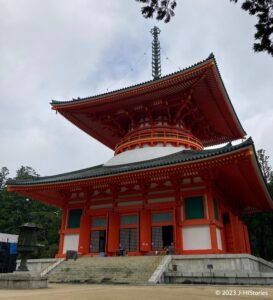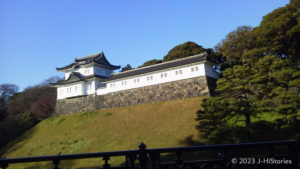Nijo-jo Castle Watched the Rise and Fall of Tokugawa Shogunate
Nijo-jo Castle - a UNESCO World Heritage and National Treasure site - is a residence of successive Tokugawa shoguns in Kyoto. This stunning castle had witnessed the growth, development, fall, and eventual end of the Tokugawa shogunate. What was the final stage of the Tokugawa shogunate that Nijo-jo Castle saw? How did the last shogun, Tokugawa Yoshinobu, make a critical decision to return power to the Emperor? Explore the fascinating story of Tokugawa Yoshinobu and his decision to relinquish control over Japan's government at Nijo-jo Castle.
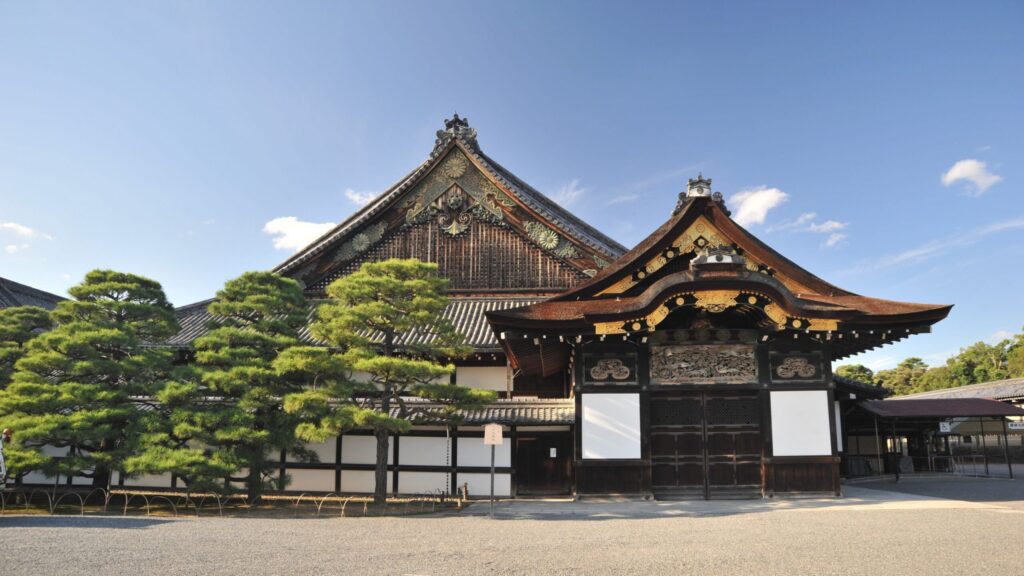
The Last Shogun, Tokugawa Yoshinobu, Returned the Political Power to the Emperor
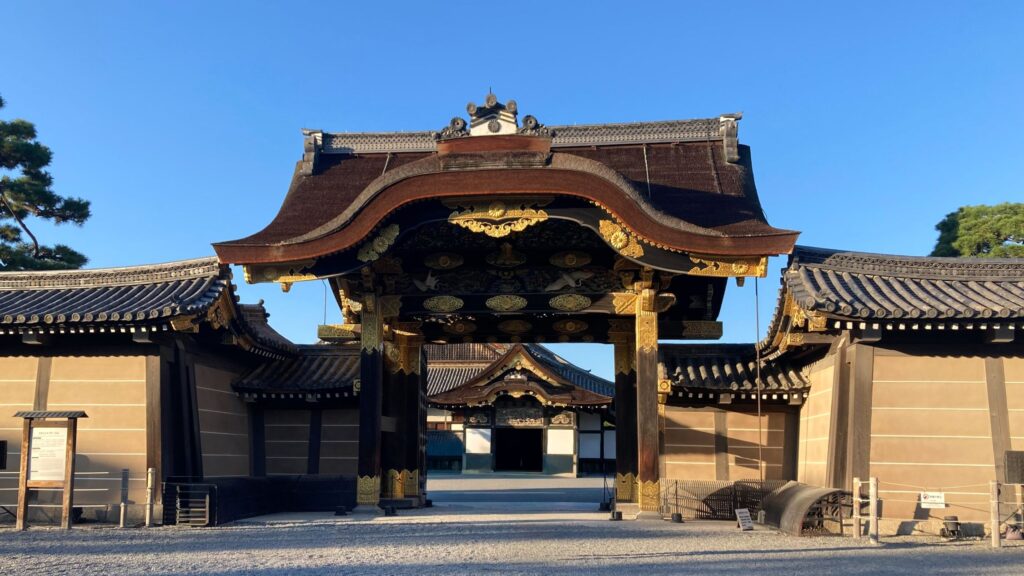
Passing through the elaborately carved Karamon Gate known as the Karahafu with its stunning metalworks, visitors are welcomed to the Ninomaru Palace. It exemplifies the vibrant Momoyama culture during the prosperous period of the Tokugawa Shogunate (1603-1868). The first shogun and founder, Tokugawa Ieyasu (1543-1616, 徳川家康), unified the nation by ending the warring states. The Nijo-jo Castle exudes absolute power, with about 3,600 wall paintings featuring powerful dragons and tigers, pine trees, and the beauty of nature set against a background of gold leaf.
It was here that the last shogun, Tokugawa Yoshinobu (1837-1913;徳川慶喜) held a final meeting to listen to his retainer's voices, then he returned political power to the emperor the next day at Kyoto Imperial Palace, bringing an end to the shogunate and realizing the bloodless surrender of Edo Castle, thereby preventing the colonization of Japan by western powers. The political environment surrounding Yoshinobu was rapidly changing and tumultuous. The threat of colonization by Western powers, the weakening of the Tokugawa shogunate, and the radical actions of low-ranking Samurai - such as street violence and break-ins - all contributed to this instability. Additionally, the Imperial Court and the Emperor were becoming increasingly involved in politics. Amid these changes, Yoshinobu had to strategically consider his options for modernizing Japan with minimal bloodshed.
Opening the Country Increased Tensions Between The Imperial Court and The Shogunate
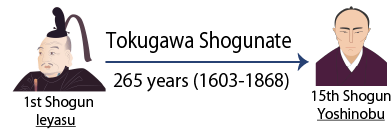
After emerging victorious in the Battle of Sekigahara and consolidating his power, Ieyasu founded the Tokugawa shogunate in 1603. As a symbol of their authority, successive shoguns resided at Nijo-jo Castle in Kyoto for over two and a half centuries. In 1867, the 15th and the last shogun, Tokugawa Yoshinobu, made the momentous decision to return political power to the emperor, and it was at the Kuro-shoin room of Nijo-jo Castle where the proclamation of Taisei Hokan .
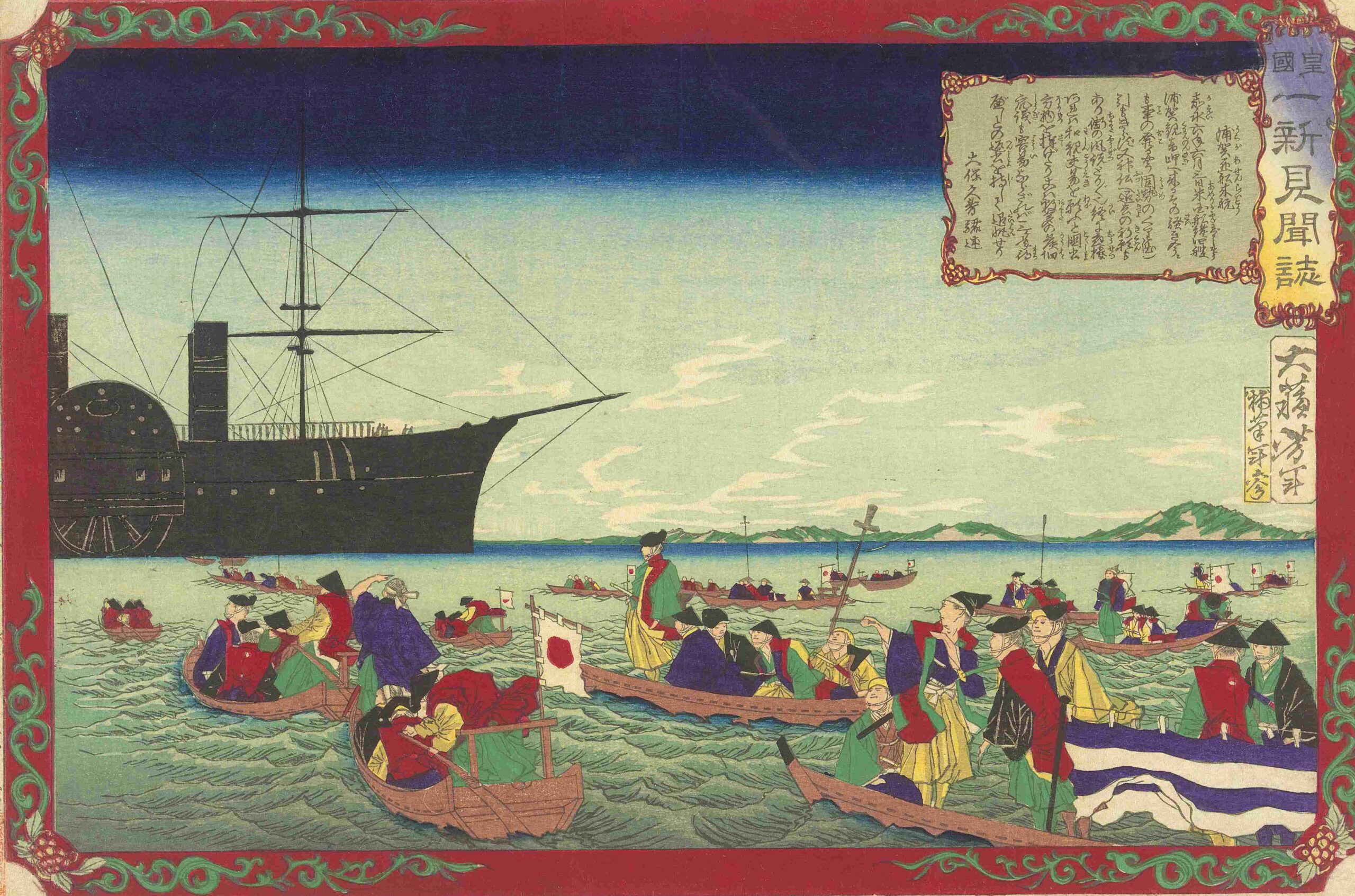
(@ Tokyo Metropolitan Museum)
It began when Commodore Perry of the United States of America entered the port at Uraga, located at the entrance to Edo Bay (Tokyo Bay) in 1853. He sought three objectives: (1) trade, (2) crew protection for those shipwrecked, and (3) fuel servicing. Hayashi Fukusai, the head of the Shoheizaka gakumonjo (academy), negotiated with Perry logically and bravely. As a result, the Tokugawa shogunate agreed to open two ports at Shimoda, located at the tip of the Izu peninsula, and Hakodate in Hokkaido for humanitarian purposes only, excluding Perry’s request for trade. The following year, “The Treaty between the United States of America and the Empire of Japan" was concluded. At that time, the 121st Emperor Komei (1831-1867, 孝明天皇) rewarded the shogunate for its accomplishment in negotiations on this treaty. In 1856, the US came to Japan again to establish trade relations. The shogunate requested permission from Emperor Komei, but faced a strong refusal as the Emperor believed it would disrupt Japan's divine order and dishonor the generations of Emperors and ancestors. Nonetheless, “The Treaty of Amity and Commerce between the United States of America and the Empire of Japan" was signed without an imperial sanction in 1858, led by Tairo, the highest rank retainer of the shogunate, Ii Naosuke. The strained relationship between the Imperial Court and the shogunate worsened, and there was a growing movement demanding the transformation of the traditional Tokugawa shogunate system. The situation became more chaotic as Russia, Great Britain, and France began to join the struggle for hegemony.
The Weakened Tokugawa Shogunate vs the Strengthened Satsuma and Choshu domains
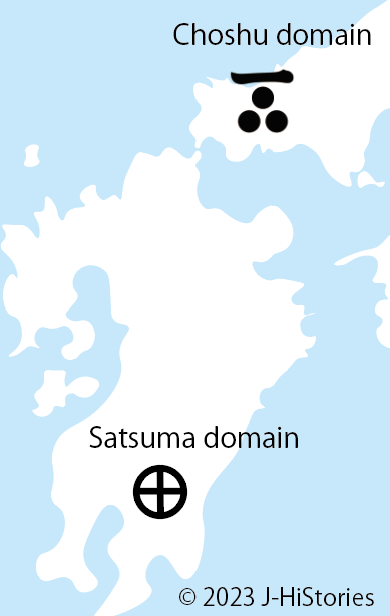
In 1860, the chief minister, Ii Naosuke, who was responsible for concluding the Treaty, was assassinated by an anti-foreign faction. As a result, the power of the shogunate was significantly weakened, while the power of the Imperial Court and several local feudal lords, such as Satsuma and Choshu, increased. This was an unexpected turn of events for Emperor Komei, who had hoped to exclude foreigners by cooperating with the shogunate. Given these conditions, Yoshinobu was appointed as the 15th shogun in 1866.
Taisei Hokan: Yoshinobu's Miracle Tactic to Retain Administrative Power
Yoshinobu believed that, faced with the imminent threat of invasion by Western countries, it was not the time for internal conflict over whether to open the country or exclude foreigners. In a historic decision, he aimed to unify the state power under the Imperial Court. Therefore, he returned the political power to Emperor Meiji (1852-1912, 明治天皇) on October 14th, known as Taisei Hokan, with a message calling for a single-minded effort to convene a committee, promote fair discussion, develop administrative policy, and then ask the Emperor to make an Imperial decision. The next day, the Emperor accepted Yoshinobu’s petition via imperial sanction. Another story suggests that Yoshinobu’s Taisei Hokan was a miracle tactic to overcome opposition to the Tokugawa shogunate. The lightning-fast Taisei Hokan succeeded in suppressing the anti-Tokugawa movement by eliminating the object of its opposition: the Tokugawa shogunate itself. In reality, on the same day, anti-Tokugawa domains, such as Satsuma and Choshu, complied with a false Imperial decree and were about to defeat the shogunate. Yoshinobu planned to retain administrative responsibilities continuously even after returning political power to the emperor, based on the fact that the Imperial Court had no actual administrative skills, having been reclusive and away from politics for over 260 years.
Pretty Tough Yoshinobu Against the Anti-Tokugawa Coup
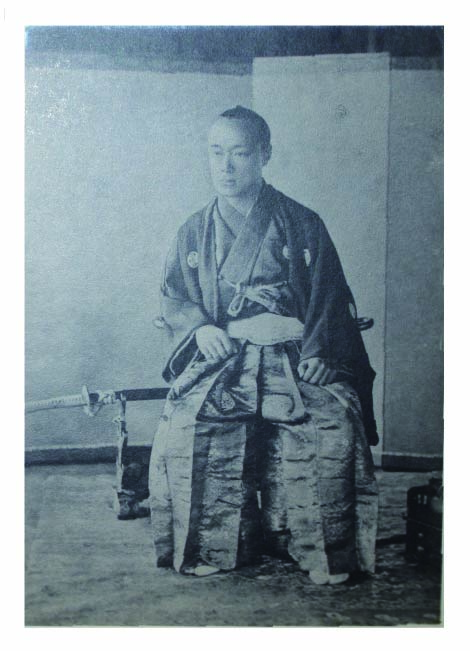
(Ibaraki Prefectural Archives and Museum Collection)
The anti-Tokugawa faction was concerned that Yoshinobu would retain political power even after a new government was established. To address this concern, they staged a coup by releasing the Declaration of Imperial Rule on January 3rd,1868, to gain an official rationale for defeating the Tokugawa shogunate. Under duress, Yoshinobu returned to the Tokugawa entity and his position as Minister of the Center. However, he did not give up. He assembled six ministers from the United States, England, France, the Netherlands, Italy, and Prussia at the solidly built Osaka Castle. He secured their agreement to (1) not interfere in internal affairs and (2) recognize Tokugawa’s diplomatic authority. The court nobles also provided practical approval for Yoshinobu’s continued government delegation under the existing system during Tokugawa's rule. Furthermore, other powerful lords, such as the Tosa and Echizen domains, opposed the self-indulgent politics of the anti-Tokugawa faction. As a result, the anti-Tokugawa faction's scheme failed once again.
Edo Castle's Bloodless Surrender
The anti-Tokugawa faction resorted to terror in Edo, such as arson, looting, and robbery, to justify their use of force to overthrow the Tokugawa shogunate. This sparked the Boshin War, which began at Toba-Fukashi in Kyoto. Yoshinobu established his front line at Osaka Castle, while Nijo-jo Castle was the political center. He repeatedly ordered his retainers never to engage in combat in the vicinity of Kyoto, where the Emperor resided. The seesaw struggle was broken by the Imperial standards run up by the anti-Tokugawa school (although one theory suggests it may have been an imitation). Yoshinobu struggled to accept that he was now considered an enemy of the Emperor, given his early childhood education in imperialism. He surprisingly escaped from Osaka Castle and returned to Edo Castle without notifying his retainers.
Born into a samurai family, Yoshinobu was also an aristocrat with a noble lineage on his mother's side, which was unique among the successive Tokugawa shoguns. This fact played a critical role in forming Yoshinobu's identity since childhood. Pushed to a corner, the anti-Tokugawa forces succeeded in ostracizing Yoshinobu by playing on his imperialism.
In any event, Osaka Castle, without the head of the Tokugawa military, fell into chaos. On January 7, 1868, when the order to track him down was issued, Yoshinobu immediately confined himself to the Ueno Kaneiji Temple. Finally, on May 3rd, Tokugawa’s Edo Castle surrendered without bloodshed, marking the beginning of the Meiji Restoration. After that, battles with the former shogunate forces were mirrored in Tohoku and Hokkaido, and the end of the Hakodate War brought an end to all armed struggle in May 1869.
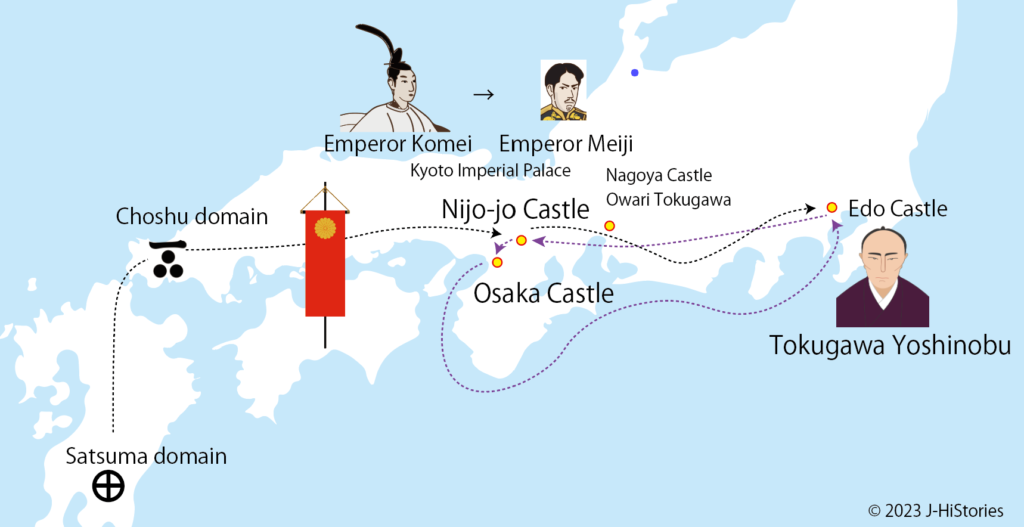
Yoshinobu's Determination for the People and Nation
The surrender signified the end of the Edo period, which had lasted about 260 years since 1603, and also the end of the Samurai government, which lasted more than 400 years since the establishment of the Kamakura shogunate in 1185. To modernize and increase wealth and military power to prevent colonization by Western Powers, many of Tokugawa’s retainers worked diligently with their skills, knowledge, and intelligence for the new government. Yoshinobu’s beliefs were focused on working:
- for the people,
- for the nation to prevent colonization,
- for the emperor as the raison d'être of the nation,
- and for the Tokugawa clan as the head of the Tokugawa family,
Please enjoy walking along the corridors of several rooms while watching Tokugawa’s prestigious wall paintings in Honmaru (main circle of defense) and Ninomau (secondary circle of defense), as well as its beautiful gardens. You will feel the indomitable spirit of one young leader, Yoshinobu, who struggled with the times and society, and the extent of his determination, unflinching mindset, and unflagging resolve as he navigated through a period of turmoil.
- Interviewed Yoshiba Toshiyuki (Manager, Curatorial Group of Ibaraki Prefectural Archives and Museum)
Tokugawa Yoshinobu Timeline
| Year | JP-Era | Month | Events | Yoshinobu | |
|---|---|---|---|---|---|
| 1603 | Keichō 8 | Ieyasu estabished Tokugawa Shogunate at Edo | - | Edo Period | |
| Ieyasu built Nijo-jo Caslte | - | ||||
| : | The time of peace | - | |||
| 1837 | Tenpō 8 | Tokugawa Yoshinobu was born in the Mito domain | Age=1 | ||
| 1853 | Kaei 6 | Commodore Perry of the US entered port at Uraga at the entrance to Edo Bay | 17 | ||
| 1854 | Kaei 7 | 3 | The Treaty of Peace and Amity between the US and Japan was concluded | 18 | |
| 6 | The Treaty of Amity and Commerce between the United States and Japan was concluded without an imperial sanction in 1858 | 18 | |||
| 1858 | Ansei 5 | 9 | Ansei Purge started to crackdown on over 100 people including Yohinobu's father | 22 | |
| 1860 | Man'en 1 | 3 | Ii Naosuke was assassinated in front of Sakuradamon gate | 24 | |
| 1863-64 | Bunkyū 3-4 | The Shimonoseki campaign between the Chōshū domain and joint naval forces from the UK, US, France and Netherlands to control the Shimonoseki straight | 27-28 | ||
| 1864 | Genji 1 | 3 | Yoshinobu was appointed to the post to protect Kyoto Imperial Palace | 28 | |
| 7 | Kinmon incident | 28 | |||
| 1866 | Keiō 2 | 1 | The political and military alliance concluded between Satsuma and Chōshū domains | 29 | |
| 2 | Yoshinobu was appointed the 15th Shogun | 30 | |||
| 1867 | Keiō3 | 10 | Taisei Hokan | 31 | |
| 12 | The Decree for the Restoration of Imperial Rule | 31 | |||
| 1868 | Meiji 1 | 1 | The Boshin War started at Toba-Fushimi | 32 | |
| 1 | Yoshinobu escaped from Osaka castle to Edo castle | 32 | |||
| 2 | Yoshinobu was confined at Ueno Kaneiji Temple | 32 | |||
| 4 | Edo castle surrendered without bloodshed | 32 | |||
| 10 | The Meiji Restoration | 32 | Meiji Period | ||
| 1869 | Meiji 2 | 5 | Boshin War ended at Hakodate | 33 | |
| 1894-1895 | Meiji 27-28 | Japanese-Sino War | 58-59 | ||
| 1898 | Meiji 31 | Yoshinobu met Emepror Meiji | 62 | ||
| 1904-1905 | Meiji 37-38 | Japanese-Russo War | 68-69 | ||
| 1913 | Taishō 2 | Yoshinobu passed away | 76 | Taisho Period |
Recommendations to visit
- Access: 15 minutes from Kyoto Station. Take bus #9 at B1 , or #50, #101, or #111 at B2. Get off at "Nijo-jo-mae(二条城前)" bus stop, then a 3-minute walk.

